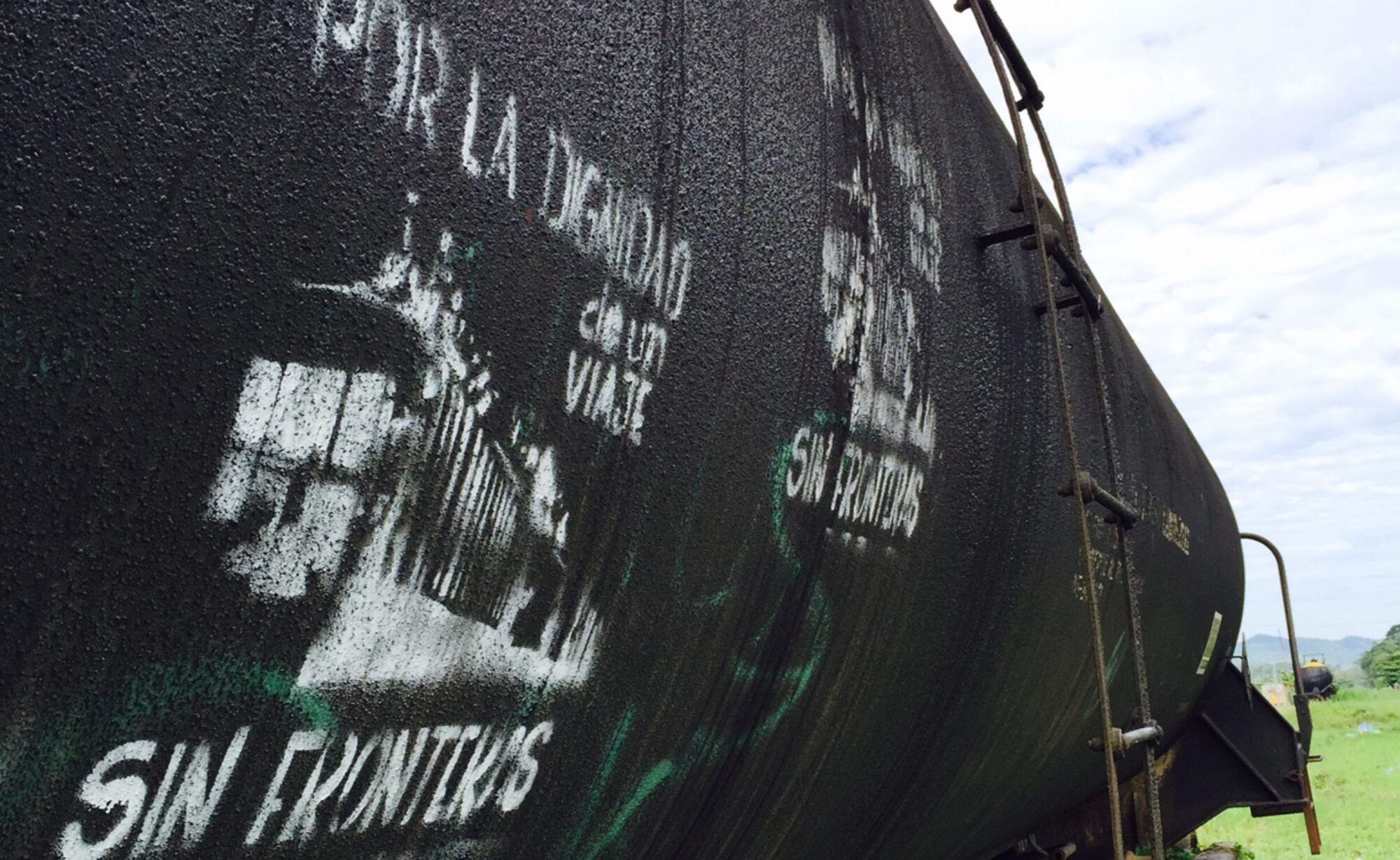“Below us in Nogales, the agent abruptly halted his lecture and tore up the hill again, spitting gravel from his wheels. I was relieved, because you never know how such a scene might play out. Every day such displays of asymmetrical power take place, small acts of aggression that never make the news. Before long, the agent returned to his perch under the camera post, an elevated spot providing unobstructed views of the surrounding area. This whole scene would not have happened before 1994, when there was only a chain-link fence with big holes through which people would cross back and forth. According to longtime resident and musician Gustavo Lozano, back then the only worry was the occasional presence of a kid at the hole asking for pocket change. When Lozano occasionally got caught by the Border Patrol and thrown back into Mexico, there was no incarceration, no formal deportation on his record. He told me that he would often cross from Mexico into the United States to pay a bill at a department store for his mom, to play basketball with his cousins, to hang out with his family. As late as the 1980s, on holidays such as September 16—Mexican Independence Day—officials opened the borders completely and a parade zigzagged back and forth as if the international boundary simply didn’t exist.
Ambos Nogales is one place that exists on both sides of the U.S.- Mexico border. Ambos means “both,” and as the name suggests, communities on both sides of the border share deep familial, community, social, economic, and political ties. They also share common infrastructure. As Ieva Jusionyte writes in her book Threshold: Emergency Responders on the U.S.-Mexico Border, “extending from northern Sonora to southern Arizona, the railway, the highway, even the sewage pipeline facilitate dense ties between the two sides of the border. It becomes impossible to disentangle one town’s everyday logistics from the other’s.” The border cannot stop the roots of trees and the vast mycelium networks symbiotically entangled with them from reaching across to the other side.
At Ambos Nogales, the border is not designated by a mountain, lake, or river. This border first came into being as an imaginary line in the sand with the Gadsden Purchase in 1853, that is, if a transaction at gunpoint can be considered a “purchase.” Officials from both countries put up the first permanent fence in 1918 after what was known as the Battle of Ambos Nogales. The battle resulted from spiking tensions after the implementation of passport requirements by the United States, which included limiting the number of times Mexican citizens could cross the border. Repeated shootings by U.S. Customs agents and military, including the killing of two Mexican citizens, precipitated the combat. In his book Violent Borders, geographer Reece Jones argues that borders are implicitly violent, often from their very inception.”
Read the rest here as it appeared in Yes! Magazine.
